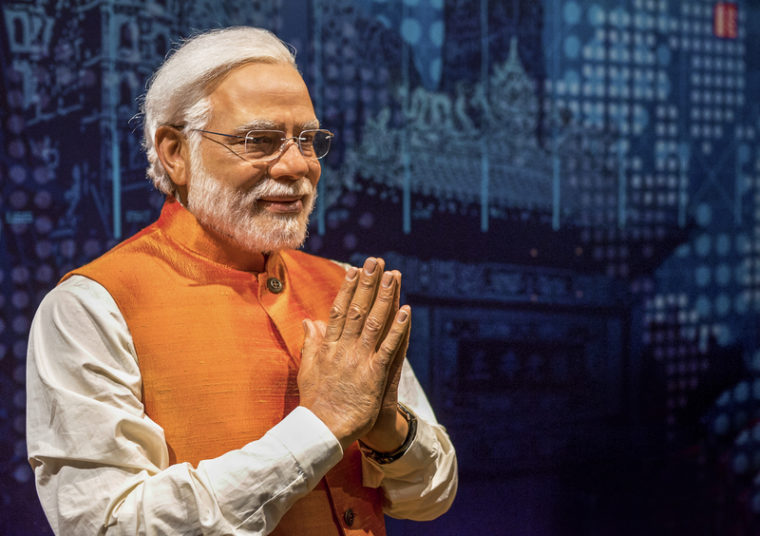
By giving him a mitigated electoral mandate, Indian voters have dealt Prime Minister Narendra Modi a lucky break although many within the country and outside see it as a rebuke to his leadership and his party, the BJP.
Now that the elections dust is settling, he can finally in his 70s win more freedom from his life-long mentor the RSS, an activist group dedicated to building a country secure in its Hindu heritage after some eight centuries of subjugation by Muslim and Christian minorities.
Modi now has a freer hand to reform the BJP into a more self-confident and secular political machine that hews its own path without depending on RSS activists for door-to-door canvassing of Hindus. Thus, he can prepare the groundwork for the BJP in a post-Modi India.
In a shock election result, the BJP won only 240 seats in India’s 543-seat Lok Sabha, the lower house of parliament, well short of the 400 seats it had targeted. That forced Modi to begin his third five-year term in coalition with other parties for the first time but he is now on par with independent India’s first prime minister, the revered Jawaharlal Nehru.
Modi remains a political strongman because the BJP rules from a position of strength with more than 80 percent of seats in his coalition, the National Democratic Alliance (NDA).
The opposition INDIA alliance led by Rahul Gandhi, Nehru’s great grandson, surprised forecasters by winning 234 seats to the NDA’s 293 seats. Gandhi hopes to break Modi’s majority by seducing a few coalition politicians, but that will be an uphill struggle. His own alliance is much frailer because it comprises 26 parties with disparate political agendas and was cobbled together only for the recent elections.
Gandhi may not be able to hold his people together under onslaught from the combative BJP. He is no match for Modi’s political skills despite his prominence in the Indian National Congress, which is still controlled by his family and ruled the country for decades.
Modi’s line-up of 71 cabinet ministers and junior ministers is largely unchanged from his previous term, demonstrating his firm grip on the reins of power. That should ensure India’s political stability regardless of the virulence of some Modi critics led by Gandhi.
Importantly, Modi’s two main coalition partners agree with most of his economic, trade, defense and foreign policy agendas, which is an asset for continuity of key policies within the nation and abroad. But they do not support the BJP’s Hindu nationalism so he will have to find ways of tempering that without provoking anger among the RSS rank and file.
The most surprising reason for the BJP’s electoral discomposure was the huge losses suffered in its heartland, the northern state of Uttar Pradesh (UP). It is ruled by Modi’s handpicked acolyte, Chief Minister Yogi Adityanath, a Hindu monk often publicized as a future BJP Prime Minister.
Many see this as a disavowal by Hindus of appeals to their religion to gain votes but it likely signals voter frustration at the slow pace of job growth and prosperity.
The dramatic electoral reversals have weakened RSS claims as a guarantor of voter turnout. That gives Modi space to transform the BJP into a normal party less dependent on RSS’s Hindu activists and more focused on economic and social development unrelated to religion.
Another sign of Modi’s strength was his cabinet’s first decision on June 10 extending a subsidized housebuilding program for poorer Indians. That signaled continuity in his welfare agenda and could help the BJP to improve performance in forthcoming State and district elections. In India’s vast democracy, those happen every few months.
Strains could emerge if Modi’s so far quiescent major allies, the Janata Dal (United) from the eastern state of Bihar and the Telugu Desam Party from Andhra Pradesh in the south, demand much more money from Delhi for their regional development programs.
But they will support his urgent priorities of reining in inflation and creating many more jobs. The necessary reforms may be tough because of powerful agricultural and trade union lobbies that demand huge tax-payer financed subsidies the economy can no longer afford.
Defense spending must also grow quickly because of continuing military threats from China along India’s long Himalayan border, where Beijing wants to annex very large chunks of territory, including the entire eastern State of Arunachal Pradesh. It is also a military ally of nuclear-armed Pakistan, an enemy that wishes to annex all of India’s northern State of Kashmir.
These threats are driving Modi to tighten ties with Biden and deepen engagement with Washington’s attempts to deter China in the Indo-Pacific. He is also turning towards Gulf partners, including Saudi Arabia and the UAE, to increase engagement with Islamic states while bidding for leadership of the broader global south.
















